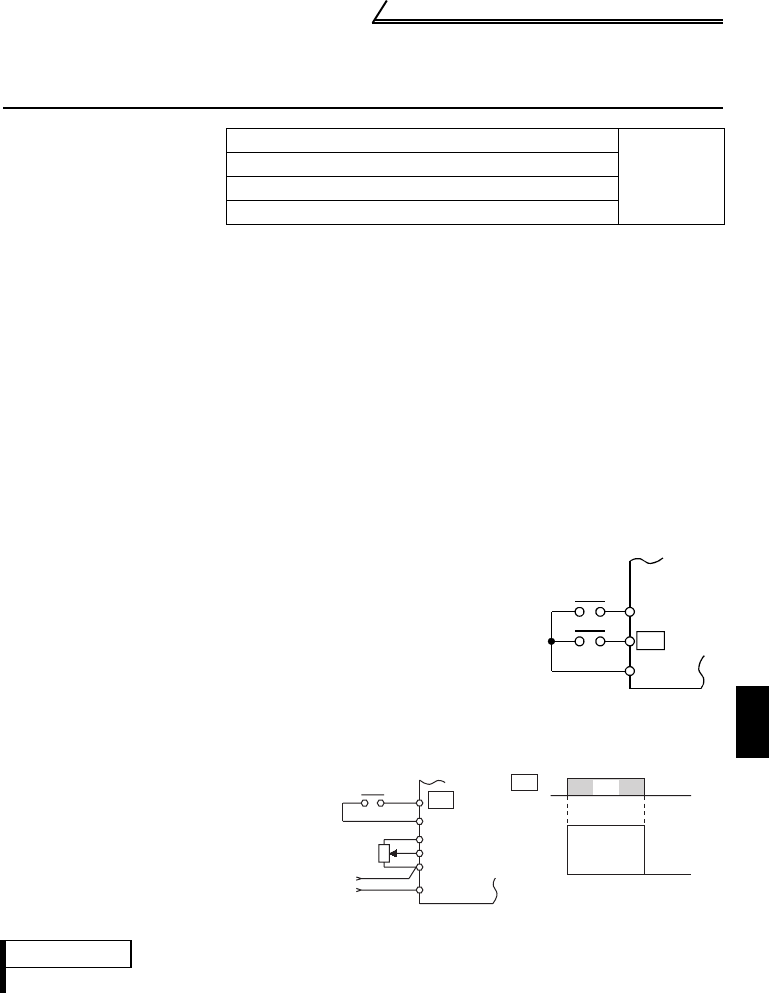
33
How to use the input signals (assigned terminals
RL, RM, RH, STR)
1
WIRING
1.5 How to use the input signals
(assigned terminals RL, RM, RH, STR)
1.5.1 Multi-speed setting (RL, RM, RH, REX signals):
Pr. 60 to Pr. 63 setting "0, 1, 2, 8"
Remote setting (RL, RM, RH signals):
Pr. 60 to Pr. 63 setting "0, 1, 2"
• By entering frequency commands into the RL, RM, RH and REX signals and turning
on/off the corresponding signals, you can perform multi-speed operation (15
speeds). (For details, refer to page 29.)
• If the operation panel is away from the control box, you can perform continuous
variable-speed operation with signal contacts, without using analog signals. (For
details, refer to page 95.)
1.5.2 Second function selection (RT signal): Pr. 60 to Pr. 63 setting "3"
1.5.3 Current input selection "AU signal": Pr. 60 to Pr. 63 setting "4"
These terminals can be
changed in function by
setting Pr. 60 to Pr. 63.
Pr. 60 "RL terminal function selection"
Page 98
Pr. 61 "RM terminal function selection"
Pr. 62 "RH terminal function selection"
Pr. 63 "STR terminal function selection"
Pr. 44 "second acceleration/deceleration time"
Pr. 45 "second deceleration time"
Pr. 46 "second torque boost"
Pr. 47 "second V/F (base frequency)"
To set any of the above functions, turn on this
"RT signal".
When a fan, pump etc. is
used to perform operation
of constant- pressure/
temperature control,
automatic operation can
be performed by entering
the 4-20mADC output
signal of a regulator into
across terminals 4-5.
When the 4-20mADC signal is used to perform operation, always short the AU signal.
REMARKS
The current input is ignored if the multi-speed signal is input.
STF (STR)
RT
Inverter
Start
Second acceleration
/deceleration
SD
OFF
Automatic/manual
signal switching
Manual operation
Frequency setting
potentiometer
A
utomatic signal
4-20mADC
AU
10
2
5
4
Inverter
ON
Operation
Automatic
operation
4 to 20mA
Manual
operation
0 to 5V
(0 to 10V)
SD
Across
AU-SD


















